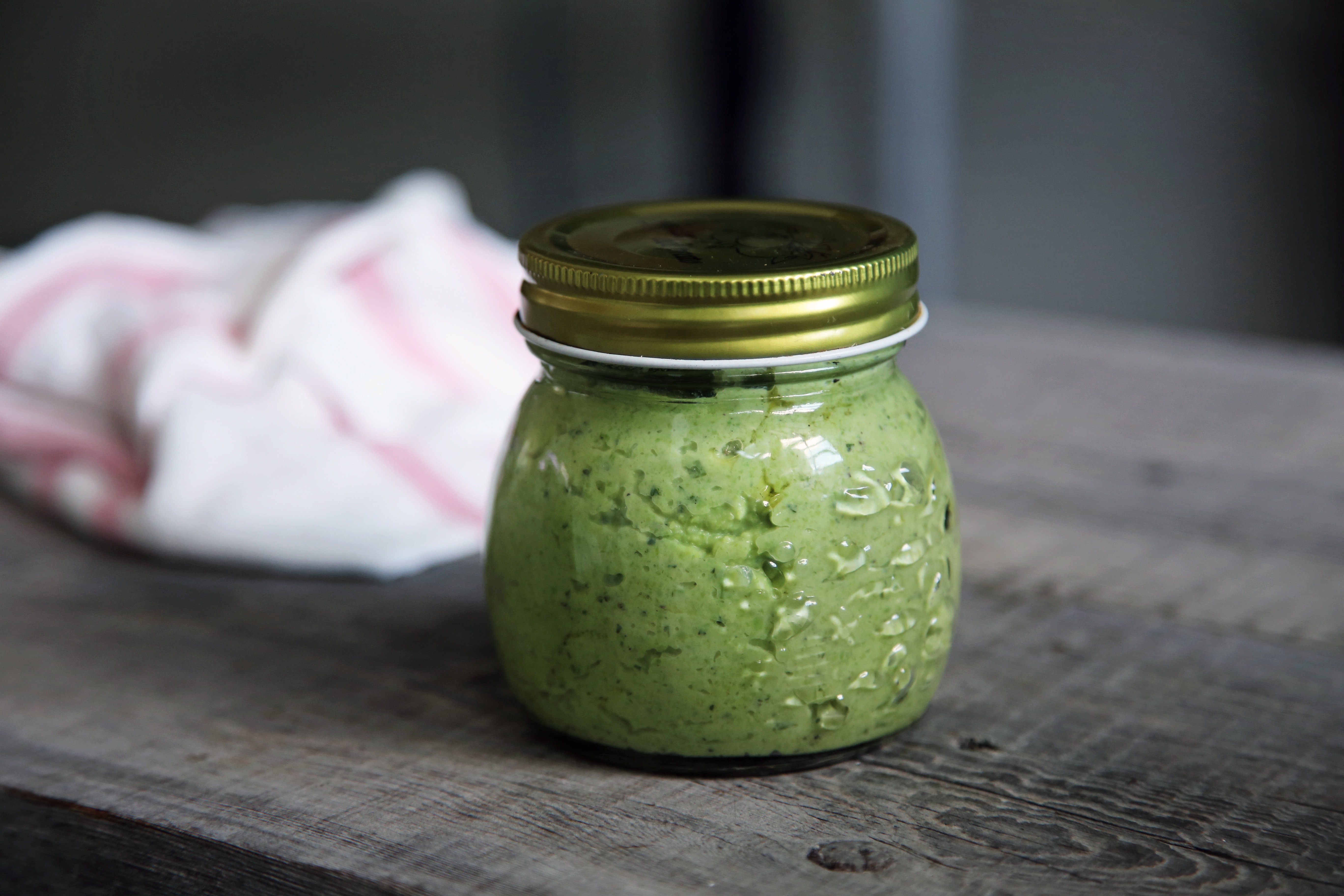Pasta is a great, inexpensive way to make a meal quick and filling. Pastas are made from so many different ingredients these days: wheat, a variety of GF, spinach, and sweet potato for more nutrients, chickpeas for higher protein… You can also make your own veggie pasta with spiralizers! I love pasta but couldn’t eat tomatoes, garlic, creamy sauces… I was starting to feel bored with just olive oil and salt. I tried looking for pesto at the grocery store but couldn’t find one I could eat. Then it occurred to me… it can’t be that hard to make my own pesto! Better yet, it was summer, so my parents’ garden had plenty of fresh basil. Years later, pesto is still a staple of my diet and a favorite go-to for quick, easy, delicious meals! Here is my favorite pesto recipe!
Ingredients
- Fresh basil — organic (or hydroponic) and local if possible!
- Cashews
- Mascarpone
- Fresh mozzarella
- Salt
- Olive oil
Directions
For this pesto recipe, blend all ingredients together in a blender or food processor. For ratios, it’s up to you! You’ll want a lot of basil compared to everything else, but I’ve played around with different ratios and found many I like. I usually fill the blender with basil, pour in some cashews, plop a heaping spoonful of mascarpone, and a similar amount of mozzarella, and drizzle enough oil for it to blend well. Once it’s blended, I taste and decide what it needs more of and add salt as needed.
Sometimes I like it on the nuttier side; other times, I’m craving a creamier sauce, so I add extra mascarpone; other times, I want a fresh flavor, so I leave it heavy on the basil. The key is to play around and have fun! Consider writing down how much you used so that you can try to emulate it the next time.
Storage Tips
You can store the pesto in an air-tight container and keep it in the fridge. Note: When you go to use it, you’ll notice the outside is brown, but the inside is still green. Basil turns brown when exposed to air or extreme temperatures. It’s ok to eat!
Freezer tip: I like to make huge batches of pesto using this pesto recipe, so I don’t have to do it every week (I eat a lot of pesto!). I also have histamine intolerance, so I can’t eat things that have been sitting in the fridge. So, I scoop single-serving portions into freezer containers and separate layers with aluminum foil. Once they’re frozen, I store them in freezer-safe containers or bags. That way, anytime I need some pesto, I quickly grab a frozen dollop, microwave it for 30 seconds, and it’s fresh and ready to go!
Modifications
I ended up with these ingredients because I can eat them. Cashews are one of 3 nuts I can eat. I’ve also tried sunflower seeds (which I can tolerate in low doses) but liked the flavor less. I encourage you to enjoy it and play with different ingredients you want and can eat! Here are some suggestions:
- Nuts: I use cashews because they’re my favorite of the three nuts I can eat, but it turns out that cashews have a wonderful sweetness and creamy texture that works great in pesto! If cashews are a no-go for you, try any nut or seed you can tolerate. Most pesto at the store has pine nuts. And if you can’t do any nuts or seeds, go without!
- Dairy: I use mascarpone and fresh mozzarella because they are low in histamine. You can try other cheeses, dairy-free if needed, or even milk. You can also use mascarpone without mozzarella (mascarpone is lactose-free!) or go without cheese altogether.
- Fat: You can use any oil. I’ve never tried it with butter, coconut oil, or ghee, but that would probably work as well!
- Salt: You can make pesto without salt if you have high BP, but if you’re like me and have low BP or POTS — pesto can hold so much salt without tasting bad!! I eat this when I need a boost to keep me upright.
Health Benefits
- Basil has rosmarinic acid — a mast cell stabilizer and antioxidant. It also has nutrients like vitamins A and C and magnesium
- Olive oil is highly anti-inflammatory
- Cheeses have calcium and protein
- Cashews have protein, iron and are relatively low-histamine
- The ingredients together have a good mix of protein and fat for long-lasting, steady energy, and the fat from nuts and olive oil is unsaturated, the healthy kind, that helps maintain healthy cholesterol
Pesto is so versatile — you can eat it on plain pasta, with chicken, sauteed veggies, rice, spread on toast… whatever! My favorite is pasta with zucchini, chicken, and a handful of cashews for extra crunch.
Check out 5 more healthy recipes here!

